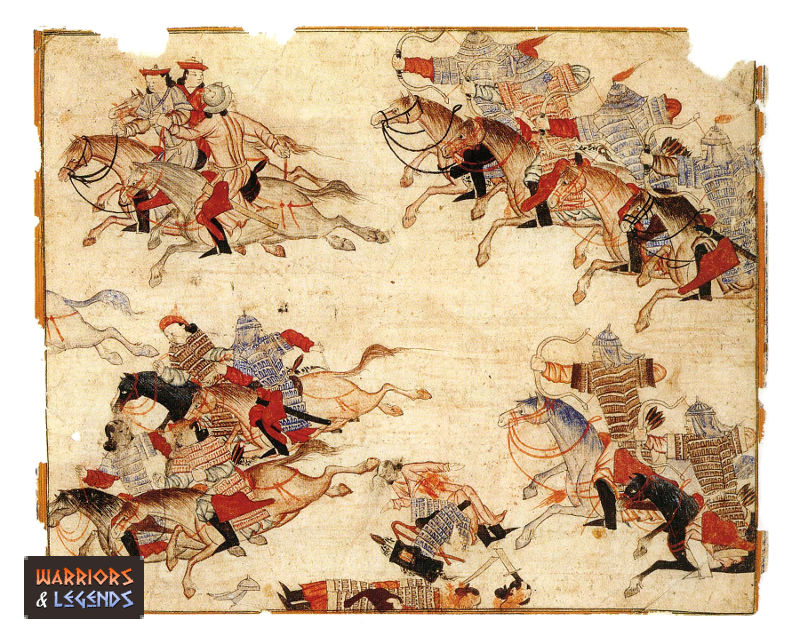|
|
Post by legacyofthesword on Aug 22, 2017 0:08:27 GMT
Something that's been swirling around in the back of my mind for a couple months: fabric can actually provide good protecting against cuts and stabs, especially in multiple layers. Also, I find it odd that most people think the "basic armor" of the old days was a leather tunic. Aside from buff coats used in the 1500-1600s, I can't think of a single time period were leather was used for anything other than a material to tie together or cover armor. Heck, even in the ancient Americas, where leather was the primary clothing of choice, you didn't have hardly anyone making armor out of leather. Incas, Mayans, Aztecs: most used quilted cotton armor (exactly the same as a gambeson), and northern tribes usually used wood:   Even the Melanesian people used coconut fiber to create armor.  So where did the idea of leather being the "basic armor" of the average warrior come from? |
|
|
|
Post by Timo Nieminen on Aug 22, 2017 0:11:59 GMT
So where did the idea of leather being the "basic armor" of the average warrior come from? D&D and Hollywood and fantasy novels themselves influenced by D&D and Hollywood. That said, there has been plenty of rawhide armour. |
|
|
|
Post by legacyofthesword on Aug 22, 2017 0:18:33 GMT
That said, there has been plenty of rawhide armour. Hmm... can't say I've ever seen any historical examples. Care to enlighten me? |
|
|
|
Post by Timo Nieminen on Aug 22, 2017 1:33:11 GMT
Some examples that come to mind: Ancient Chinese (Warring States) rhino hide or buffalo hide armour (gé jiǎ 革甲), Central Asian lamellar (e.g., www.metmuseum.org/art/collection/search/26612 for a Tibetan example), Korean brigandine (iirc, there's an example in Stone's Glossary, under "armour"), Japanese lamellar, North American body armour, some of the Dura-Europos armours, some European horse armours, some 16th century Turkish helmets (an example in H. Russell Robinson, "Oriental Armour"). Also Indian, Persian, African and American shields if you count shields as armour. Museum descriptions often describe these armours as "leather", but they're usually rawhide. Some Japanese lamellar is a mix of rawhide and iron/steel, with alternating hide and metal lamellae. |
|
|
|
Post by legacyofthesword on Aug 22, 2017 1:41:56 GMT
Some examples that come to mind: Ancient Chinese (Warring States) rhino hide or buffalo hide armour (gé jiǎ 革甲), Central Asian lamellar (e.g., www.metmuseum.org/art/collection/search/26612 for a Tibetan example), Korean brigandine (iirc, there's an example in Stone's Glossary, under "armour"), Japanese lamellar, North American body armour, some of the Dura-Europos armours, some European horse armours, some 16th century Turkish helmets (an example in H. Russell Robinson, "Oriental Armour"). Also Indian, Persian, African and American shields if you count shields as armour. Museum descriptions often describe these armours as "leather", but they're usually rawhide. Some Japanese lamellar is a mix of rawhide and iron/steel, with alternating hide and metal lamellae. Interesting. So it seems most examples were lamellar then. Though I did find this while looking up Toraja armor you mentioned in the other thread:  I can't tell if it's actually leather though, it almost looks more like plant fiber. |
|
|
|
Post by Cosmoline on Aug 22, 2017 1:44:00 GMT
I think waxed leather or rawhide from thick skinned critters could be used to augment armor. But it gets tricky to work with. Cloth, esp wool and linen, have the advantage of being easy to work with while still providing protection when layered. A gambeson is basically a series of tunics layered on top of one another. Though modern ones often "cheat" by just quilting them.
|
|
|
|
Post by legacyofthesword on Aug 22, 2017 1:46:31 GMT
This looks like it depicts lamellar armors both in metal and leather:  |
|
|
|
Post by Timo Nieminen on Aug 22, 2017 1:51:00 GMT
Interesting. So it seems most examples were lamellar then. Yes. There were Chinese and American one-piece cuirasses, but other than those (and helmets, and shields), lamellar, brigandine, and scale were usual. Apart from flexibility, lamellar/scale/brigandine also gives you overlap. You want about 10-12mm total thickness (or more) to keep those pesky arrows out. 3mm lamellae with double-thickness overlap left-right and again double-thickness overlap between rows up-down gives you that. Though I did find this while looking up Toraja armor you mentioned in the other thread: I can't tell if it's actually leather though, it almost looks more like plant fiber. Looks like bark. |
|
pgandy
Moderator
Senior Forumite
Posts: 10,296
|
Post by pgandy on Aug 22, 2017 1:58:18 GMT
I can offer this in support of leather armour. Sorry about the language but it's too much for me to translate the pictures should make it clearer. Dragones de cuera.pdf (2.79 MB) |
|

